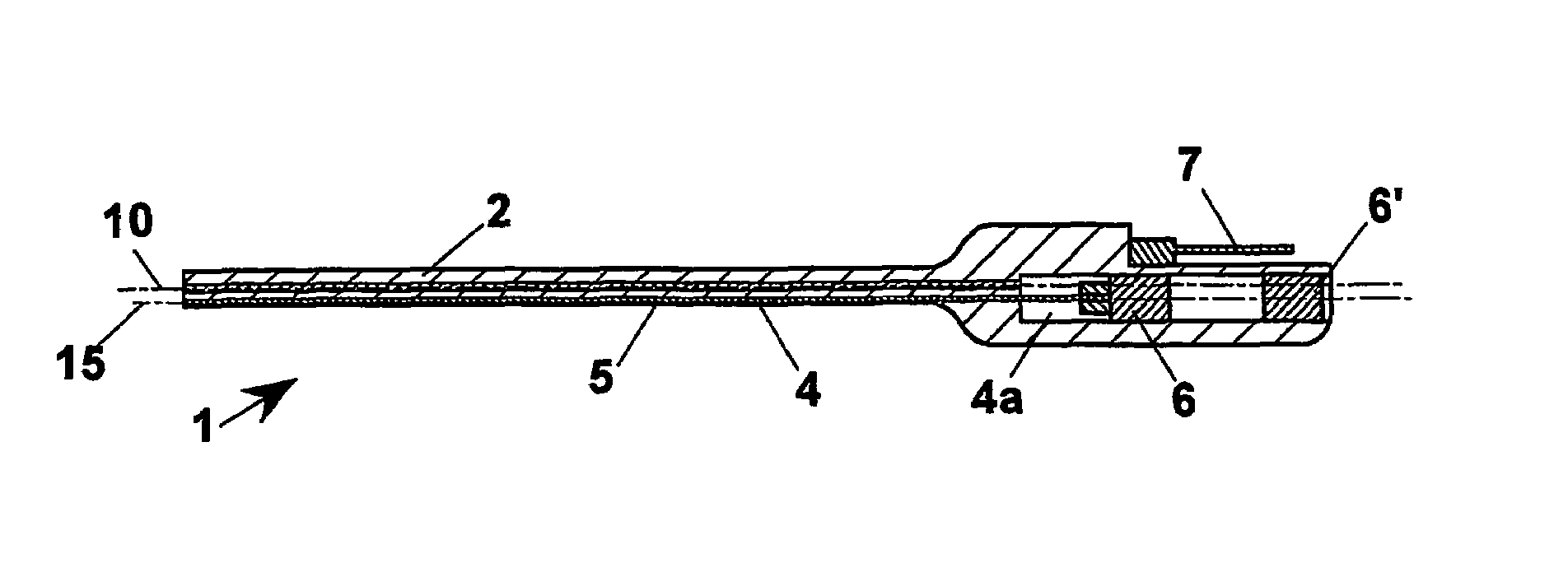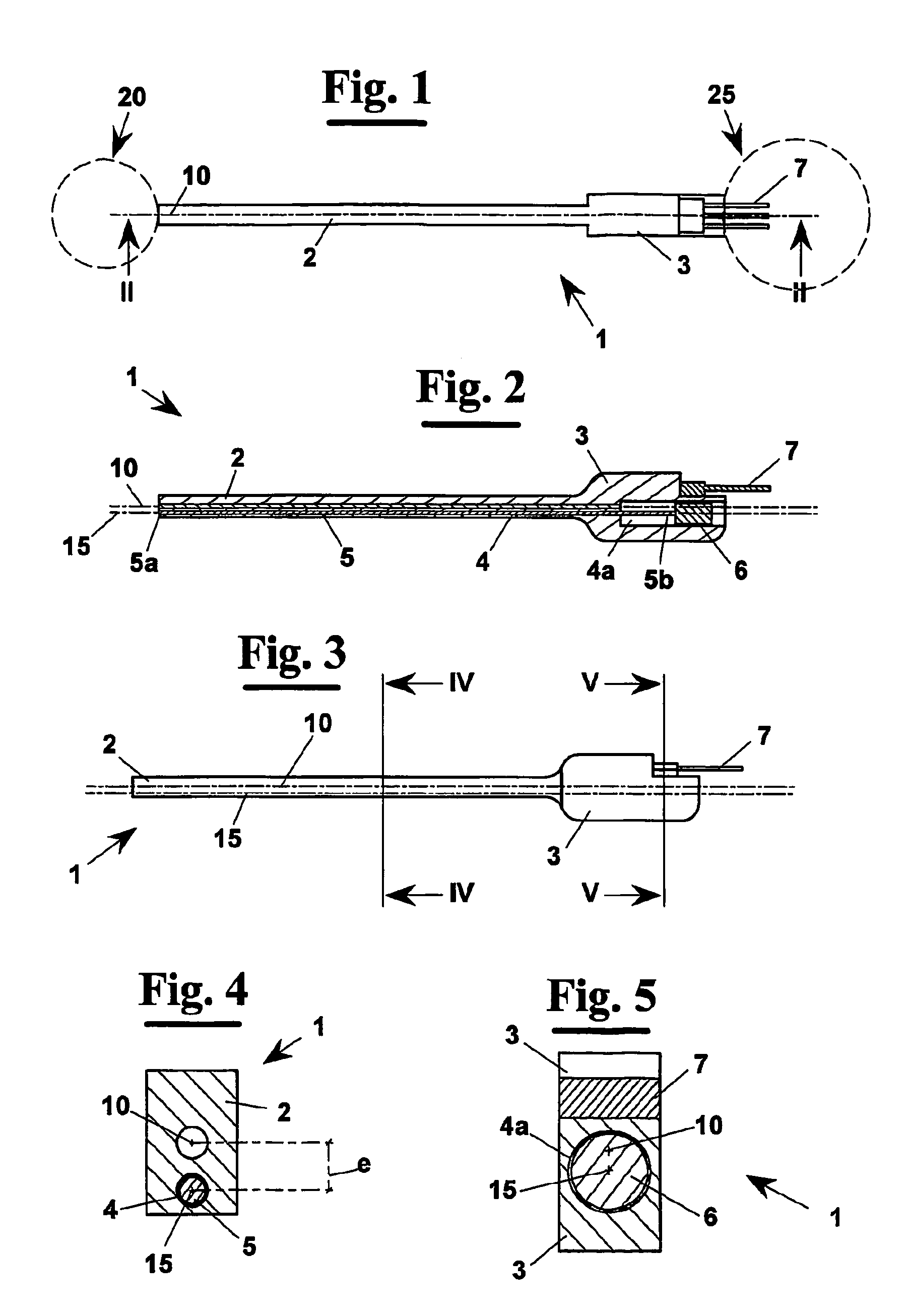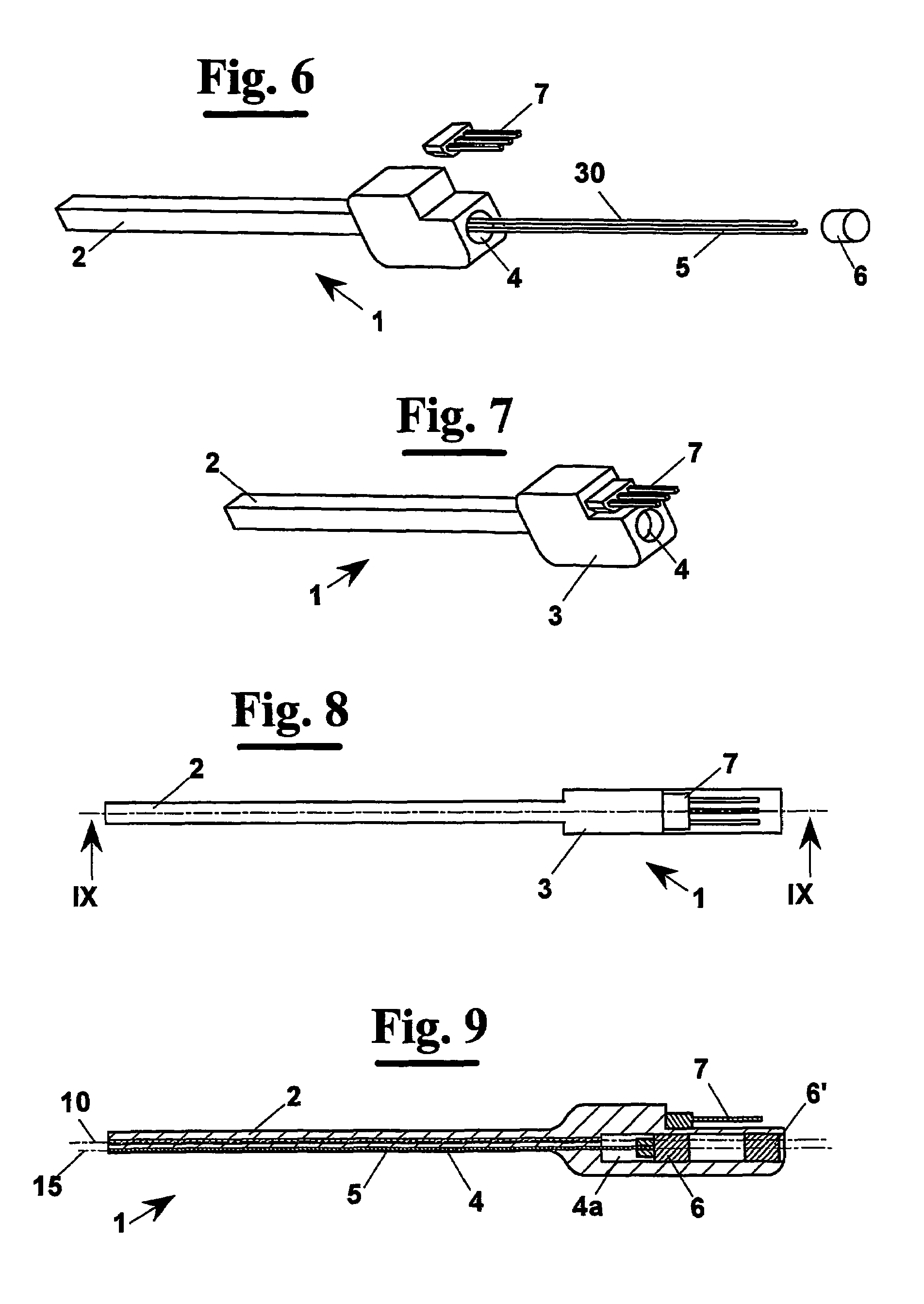Goniometric sensor
a sensor and goniometer technology, applied in the field of goniometers, can solve the problems of limited applicability of sensors in special fields, limited application of sensors, and limited range of application,
- Summary
- Abstract
- Description
- Claims
- Application Information
AI Technical Summary
Benefits of technology
Problems solved by technology
Method used
Image
Examples
Embodiment Construction
[0048]With reference to FIGS. 1 and 2, a sensor for goniometric measures 1, according to the present invention, measures the relative rotation of two bodies 20 and 25, symbolically indicated with circles in FIG. 1.
[0049]In particular, sensor 1 comprises a flexible elongated element 2 whose respective ends are connected to bodies 20 and 25. Goniometric sensor 1 has an axis of symmetry 10 that is the same of element 2. At the bending of element 2, the axis 10 becomes also neutral axis, i.e. it has lines that do not lengthen or shorten when bending. Furthermore, numeral 15 indicates a generic line that is eccentric with respect to the neutral axis.
[0050]When bodies 20 and 25 rotate with respect to each other, flexible elongated element 2 is subject to a bending that produces a length variation of the lines different from the neutral axis 10. In particular, a line coincident to eccentric line 15 is subject to a length variation ΔL (FIG. 10). It must be noted that the neutral axis change...
PUM
 Login to View More
Login to View More Abstract
Description
Claims
Application Information
 Login to View More
Login to View More - R&D
- Intellectual Property
- Life Sciences
- Materials
- Tech Scout
- Unparalleled Data Quality
- Higher Quality Content
- 60% Fewer Hallucinations
Browse by: Latest US Patents, China's latest patents, Technical Efficacy Thesaurus, Application Domain, Technology Topic, Popular Technical Reports.
© 2025 PatSnap. All rights reserved.Legal|Privacy policy|Modern Slavery Act Transparency Statement|Sitemap|About US| Contact US: help@patsnap.com



